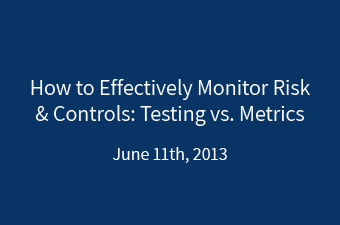Performance Management & Strategic Imperatives [Definition, Meaning & Examples]
Last Updated: September 19, 2023
The Role of the Board of Directors
The role of Boards of Directors is to ensure the on-time completion of the organization’s strategic imperatives; that is, the goals determined to be most crucial to the success of the organization’s operating plan.
To achieve this, boards require their risk managers to provide complete, accurate, and timely information that reaches across every level and function to aid in strategic decision making.
To achieve this, risk managers must build a risk taxonomy or framework to create transparency across all silos and levels, alignment of risks to the activities and goals they impact, and provide forward looking views to allow the board of directors to be proactive on risk decisions. LogicManager is a performance management software that supports enterprise governance risk, and compliance solutions, such as the balanced scorecard approach which helps build and manage your risk taxonomy.
What are Strategic Imperatives?
Strategic Imperatives focus on key projects and objectives within an organization that are high impact activities that can follow a clearly defined systematic approach to be achieved and help the company to reach their goals within a desired timeframe.
Strategic imperatives, also known as strategic plans or business initiatives, are cross–functional in nature. Resources need to be allocated to the highest impact activities, and alignment of all contributing activities needs to be made. Measures of those activities need to be identified and aggregated to track the progress the organization is making toward achieving these Strategic Imperatives.
When the risks, business performance balanced scorecard, and readiness compliance constraints associated with these activities, are not identified and their connection to Strategic Imperatives not articulated, achievement of the goals are at risk.
A Risk-Based Approach to Performance Management For Business Growth
LogicManager’s patent-pending risk Taxonomy construct supports identification and tracking of all the related elements to these Strategic Imperatives. These relationships are made through simple drag-and-drop activities. Organizations can identify and link all the root cause risks, performance objectives, and compliance constraints to the Strategic Imperative they affect. LogicManager will publish these relationships out to each contributing business process for assessment. This will identify all functional and operational activities directly relating to each indicator to be identified as contributing to Strategic Initiative.
LogicManager’s powerful GRC tools and risk taxonomy allows all the related risks, goals, standards, activities and elements to each Strategic Imperative to be aggregated and analyzed holistically using reports and dashboards. This will enable assessments and business metrics that monitor these activities to be aggregated to track the progress of these Strategic Imperatives.
Before, due to the limitations of spreadsheets, risk managers had to choose between presenting actionable data that was too granular for the CFO and board, and presenting a high level summary, such as a top 10 risk report, which lacks context, meaning how risks relate to achieving goals and activities, that the CFO and board requires. Now however, with LogicManager’s common ERM software platform, organizations can gather front-line data and aggregate it to a high level for the CFO and board that is both actionable and accurate.
A taxonomy or framework that manages the inter–connectivity of these assessments enables you to group and re-group this information to serve any stakeholder, while the value of each assessment is preserved and extended beyond its original intention as the organization evolves.




